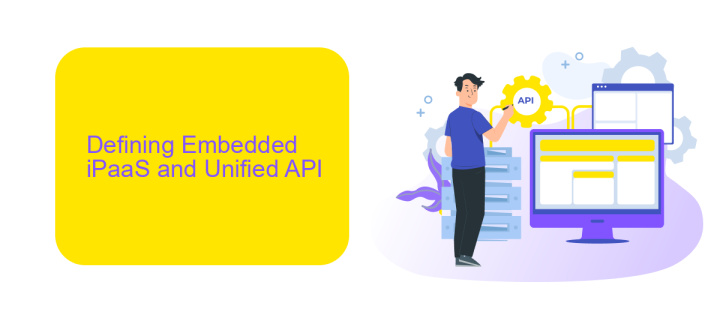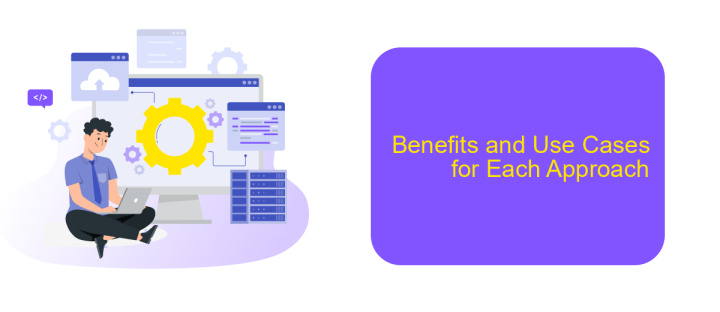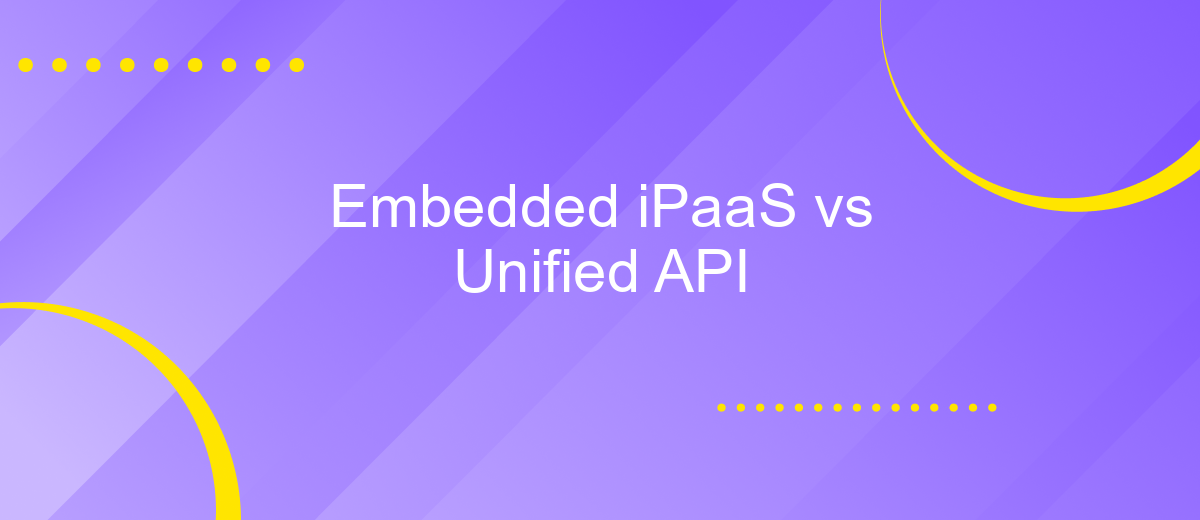Embedded iPaaS vs Unified API
In today's rapidly evolving digital landscape, businesses are increasingly turning to integration solutions to streamline workflows and enhance connectivity. Two prominent approaches are Embedded Integration Platform as a Service (iPaaS) and Unified API. This article explores the key differences, advantages, and use cases of these technologies, helping organizations make informed decisions on which solution best fits their integration needs.
Embedded iPaaS vs Unified API
When considering integration solutions, businesses often weigh the benefits of Embedded iPaaS versus Unified API. Both approaches aim to streamline data connectivity and enhance workflow efficiency, but they differ significantly in their implementation and use cases.
- Embedded iPaaS: Provides a platform for building, deploying, and managing integrations within an application. It offers pre-built connectors and tools to simplify integration processes.
- Unified API: Offers a single API endpoint that aggregates multiple services, allowing developers to interact with various applications through a unified interface.
Embedded iPaaS platforms like ApiX-Drive excel in providing an easy-to-use interface for setting up and managing integrations without extensive coding knowledge. This makes it ideal for businesses looking to quickly connect disparate systems and automate workflows. On the other hand, Unified API solutions are best suited for developers who need a consistent way to interact with multiple services, reducing the complexity of managing different APIs. Ultimately, the choice depends on the specific needs and technical capabilities of the organization.
Defining Embedded iPaaS and Unified API

Embedded iPaaS (Integration Platform as a Service) is a cloud-based solution that enables businesses to seamlessly integrate various applications and data sources. It provides a unified platform for managing and orchestrating integrations, allowing organizations to streamline their workflows and automate processes without the need for extensive coding. One such service, ApiX-Drive, simplifies the integration process by offering a user-friendly interface and pre-built connectors, enabling businesses to quickly set up and manage integrations between different systems.
On the other hand, a Unified API is a single API that aggregates multiple APIs from different services into one cohesive interface. This approach allows developers to interact with various services through a single, standardized API, reducing the complexity and effort required to manage multiple integrations. By using a Unified API, businesses can achieve greater efficiency and consistency in their integration efforts, making it easier to maintain and update connections as needed. Both Embedded iPaaS and Unified APIs aim to simplify the integration landscape, but they do so through different methodologies and use cases.
Key Differences between Embedded iPaaS and Unified API

Embedded iPaaS and Unified API are two distinct approaches to integration, each with its own set of features and benefits. Understanding their key differences can help organizations choose the right solution for their integration needs.
- Scope of Integration: Embedded iPaaS offers a comprehensive platform for integrating various applications, data, and processes, whereas Unified API provides a single API endpoint to access multiple services.
- Customization: Embedded iPaaS platforms, like ApiX-Drive, offer greater flexibility and customization options for complex workflows, while Unified API solutions tend to be more standardized with limited customization.
- Ease of Use: Unified APIs are generally easier to implement and use, requiring less technical expertise, whereas Embedded iPaaS may require more in-depth knowledge to fully leverage its capabilities.
- Scalability: Embedded iPaaS solutions are designed to scale with growing business needs, supporting a wide range of integrations, while Unified APIs may have limitations in handling extensive integration scenarios.
- Maintenance: With Embedded iPaaS, the platform provider, such as ApiX-Drive, typically handles maintenance and updates. Unified APIs often require individual management of each connected service.
In summary, the choice between Embedded iPaaS and Unified API depends on the specific requirements of an organization. For businesses needing extensive, customizable integrations, Embedded iPaaS like ApiX-Drive is ideal. Conversely, for simpler, standardized integrations, Unified API might be more suitable.
Benefits and Use Cases for Each Approach

Embedded iPaaS offers a seamless way to integrate multiple applications within a single platform, providing a cohesive user experience. This approach is particularly beneficial for organizations looking to streamline their workflows and reduce the complexity of managing multiple integrations independently.
On the other hand, a Unified API simplifies the integration process by offering a single API endpoint to connect with various services. This can significantly reduce development time and maintenance efforts, making it an attractive option for businesses that need to quickly integrate multiple services.
- Embedded iPaaS: Ideal for organizations seeking a unified platform to manage all integrations, such as ApiX-Drive, which allows easy configuration and monitoring of integrations.
- Unified API: Best suited for developers who need to integrate multiple services with minimal coding, reducing the overhead associated with managing multiple APIs.
Both approaches have their unique advantages and can be chosen based on specific business needs. Embedded iPaaS is excellent for comprehensive integration management, while a Unified API offers simplicity and speed for development teams.
Choosing the Right Approach for Your Business
When deciding between Embedded iPaaS and a Unified API, it is crucial to evaluate your business needs and technical capabilities. Embedded iPaaS solutions offer a comprehensive integration platform that can handle complex workflows and provide extensive customization options. These platforms are ideal for businesses that require seamless integration across multiple applications and need a scalable solution to manage growing data volumes. On the other hand, a Unified API simplifies the integration process by offering a single API endpoint, making it easier for developers to connect different services without deep technical knowledge. This approach is suitable for businesses looking for quick and straightforward integrations without the need for extensive customization.
Consider factors such as the complexity of your integration requirements, the technical expertise of your team, and the scalability of the solution. For instance, services like ApiX-Drive can streamline the integration process by providing a user-friendly interface and pre-built connectors, reducing the time and effort needed to set up integrations. By carefully assessing these factors, you can choose the approach that best aligns with your business objectives and technical capabilities, ensuring a seamless and efficient integration experience.
FAQ
What is the primary difference between Embedded iPaaS and a Unified API?
When should I choose an Embedded iPaaS over a Unified API?
What are the key benefits of using a Unified API?
Can I use both Embedded iPaaS and Unified API together?
What are the advantages of using a service like ApiX-Drive for integration needs?
Do you want to achieve your goals in business, career and life faster and better? Do it with ApiX-Drive – a tool that will remove a significant part of the routine from workflows and free up additional time to achieve your goals. Test the capabilities of Apix-Drive for free – see for yourself the effectiveness of the tool.

